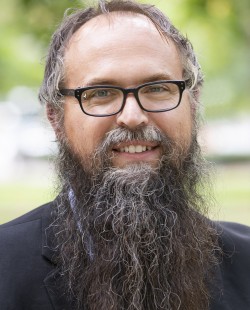What Climate Zone Is Minnesota In?
Minnesota, located in the Upper Midwest of the United States, is primarily characterized by a humid continental climate. Understanding this climate zone is crucial for various aspects of life in Minnesota, including agriculture, lifestyle choices, and seasonal activities.
General Climate Overview of Minnesota
Humid Continental Climate:
Minnesota predominantly falls within the humid continental climate zone, classified as Dfa/Dfb in the Köppen climate classification system. This classification indicates that the state experiences four distinct seasons: cold winters and warm summers.
Impact of Latitude and Distance from Oceans:
Due to its location far from large bodies of water, Minnesota experiences significant temperature variations between summer and winter. The continental climate leads to extreme weather patterns, with notable differences in temperature across seasons.
Seasonal Climate Patterns in Minnesota
– Winter (December to February):
– Winters are long and harsh, with average temperatures ranging from 0°F to 20°F (-18°C to -6°C).
– Snowfall varies significantly across the state, with totals ranging from 36 to 70 inches (91 to 178 cm).
– Cold Arctic air masses from Canada contribute to extremely low temperatures and severe wind chills.
– Spring (March to May):
– Spring serves as a transitional season, with temperatures gradually warming from 40°F to 60°F (4°C to 16°C).
– The melting snow can lead to flooding, especially along rivers like the Mississippi.
– Summer (June to August):
– Summers are warm to hot, with average temperatures between 70°F and 85°F (21°C to 29°C), though heatwaves can push temperatures above 90°F (32°C).
– Increased humidity levels are prevalent, particularly in southern Minnesota, along with frequent thunderstorms.
– Fall (September to November):
– Fall brings cooler temperatures ranging from 40°F to 60°F (4°C to 16°C), showcasing vibrant autumn foliage.
– This season is relatively short as temperatures drop quickly by November.
Climate Zones Within Minnesota
Minnesota’s climate varies by region:
– Northern Minnesota:
– Classified under the Dfb climate (Warm Summer Continental), this area experiences colder winters and slightly cooler summers. Average summer highs are typically in the 60s and 70s°F (15°C to 25°C).
– Southern Minnesota:
– This region falls under the Dfa climate (Hot Summer Continental), featuring warmer summers with higher humidity levels. Winters are still cold but milder compared to northern regions.
Influence of Bodies of Water on Minnesota’s Climate
– Lakes and Rivers:
– Known as the “Land of 10,000 Lakes,” Minnesota’s lakes help moderate local climates. For instance, Lake Superior creates a milder microclimate along its North Shore compared to inland areas.
– River Valleys:
– The river valleys contribute to regional variations in climate, increasing humidity and leading to occasional flooding during spring thaws.
Extreme Weather in Minnesota
Minnesota’s climate also includes extreme weather events:
– Blizzards and Ice Storms: Common during winter months, these can lead to hazardous conditions.
– Tornadoes: While less frequent than in southern states, tornadoes do occur during summer months, particularly in southern Minnesota.
– Heatwaves: Summer can bring intense heatwaves with temperatures exceeding 90°F (32°C).
Climate Impact on Agriculture and Lifestyle
Minnesota’s climate significantly affects its agricultural practices and lifestyle:
– Agriculture: The humid continental climate supports a robust agricultural sector, especially in southern regions where crops like corn and soybeans thrive. However, the growing season is relatively short, lasting from May to September.
– Winter Sports and Activities: The long winters facilitate popular activities such as ice fishing, skiing, and snowmobiling.
– Seasonal Festivals: Minnesotans celebrate their diverse climate through various festivals throughout the year.
FAQs
– What type of climate does Minnesota have?
Minnesota has a humid continental climate (Dfa/Dfb), characterized by cold winters and warm summers with distinct seasonal variations.
– How cold does it get in Minnesota during winter?
Winter temperatures can drop below 0°F (-18°C), especially in northern regions due to Arctic air masses.
– What are Minnesota summers like?
Summers are warm and humid, with temperatures ranging from 70°F to 85°F (21°C to 29°C) and frequent thunderstorms.
– Does Minnesota experience tornadoes?
Yes, particularly in southern parts during summer months when severe thunderstorms can spawn tornadoes.
In conclusion, Minnesota’s placement within the humid continental climate zone profoundly influences its weather patterns, agricultural practices, and seasonal activities. Understanding these dynamics is essential for residents and visitors alike.

Kyle Whyte is a notable scholar and professor at the University of Michigan, holding positions such as the George Willis Pack Professor in the School for Environment and Sustainability and Professor of Philosophy. Specializing in environmental justice, his work critically examines climate policy and Indigenous peoples’ ethics, emphasizing the nexus between cooperative scientific endeavors and Indigenous justice. As an enrolled Citizen Potawatomi Nation member, he brings a vital perspective to his roles as a U.S. Science Envoy and member of the White House Environmental Justice Advisory Council. His influential research is supported by various prestigious organizations including the National Science Foundation, and disseminated through publications in high-impact journals. Kyle actively contributes to global Indigenous research methodologies and education, with affiliations to numerous institutes and societies dedicated to traditional knowledge and sustainability. Recognized for his academic and community engagement, Kyle has earned multiple awards and served in various visiting professorships. His efforts extend to leadership positions on boards and committees focused on environmental justice nationwide.
